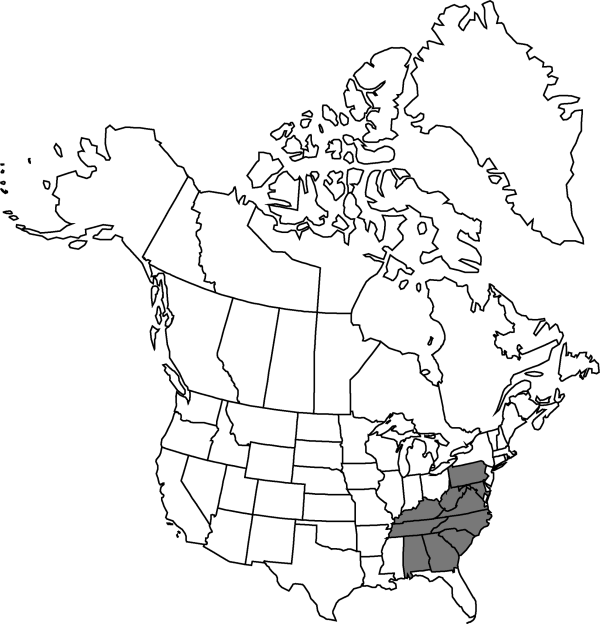Phemeranthus teretifolius
Specchio Sci. 1: 86. 1814.
Plants to 5 dm; roots elongate, fleshy. Stems ± erect, simple or sometimes branching. Leaves sessile; blade terete, to 6 cm. Inflorescences cymose, overtopping leaves; peduncle scapelike, to 25 cm. Flowers: sepals deciduous, elliptic to ovate, 3–4 mm; petals rose-purple, obovate, 5–7 mm; stamens 12–20; stigma 1, subcapitate or sometimes indistinctly 3-lobed. Capsules subglobose, 4–5 mm. Seeds without arcuate ridges, 0.8–1 mm. 2n = 48.
Phenology: Flowering Apr–Oct.
Habitat: Thin, rocky or sandy soil, usually on or near edges of sandstone, granitic, and serpentine outcrops
Elevation: 200-1000 m
Distribution

Ala., Ga., Ky., Md., N.C., Pa., S.C., Tenn., Va., W.Va.
Discussion
Phemeranthus teretifolius is an allopolyploid derived from P. parviflorus and P. mengesii, both of which it evidently outcompetes within its southern Appalachian range (M. E. B. Carter and W. H. Murdy 1985; W. H. Murdy and M. E. B. Carter 1985, 2001).
Selected References
None.